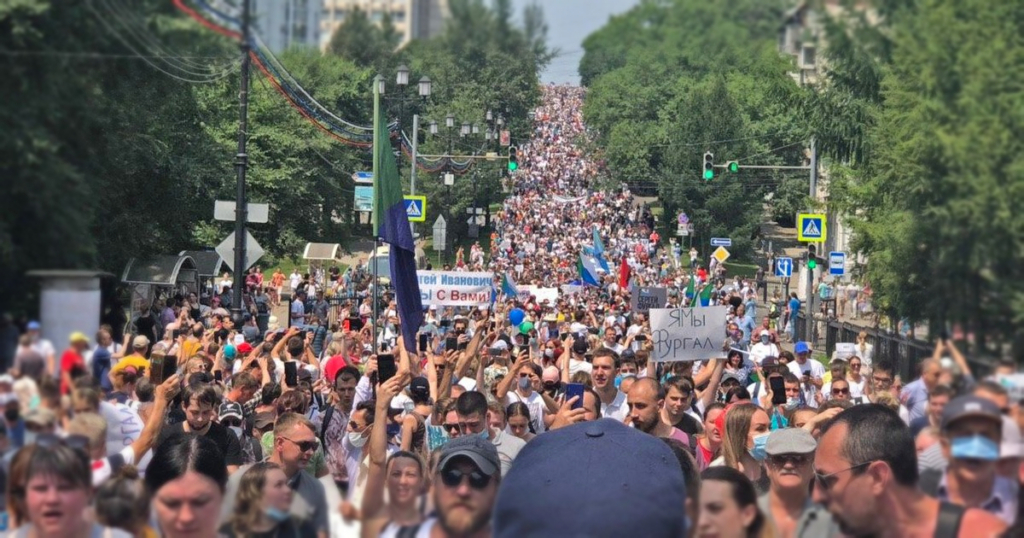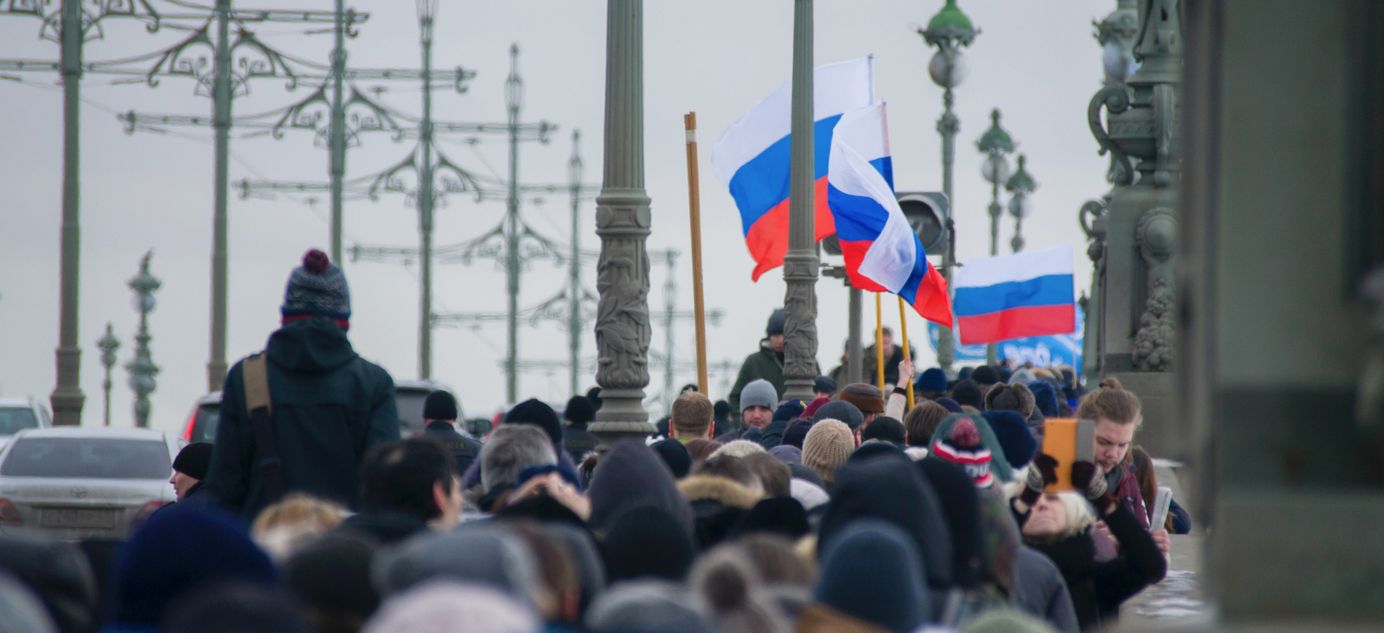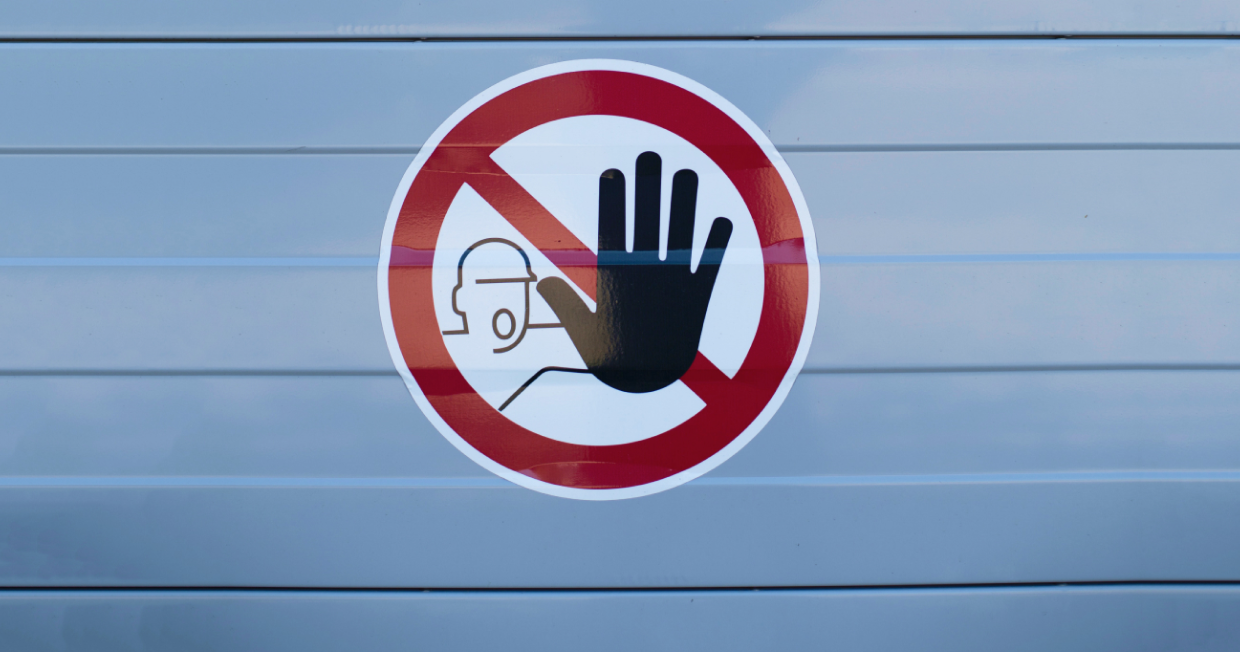
Rolling protests in Far East after governor arrest
Last week saw a series of high profile arrests, this week came the protests. Most significantly, there were big demonstrations over multiple days in the Far East city of Khabarovsk after the detention of local governor Sergei Furgal. There were smaller protests in Moscow.

- Khabarovsk has seen daily protests this week, but the biggest took place Saturday, the first weekend after Furgal’s arrest. Somewhere between 30,000 and 60,000 people took part, or 5 percent to 10 percent of the city’s population. If Moscow saw a similar turnout, there would be a million people on the streets — this last happened in the 1990s. The Khabarovsk protests have passed off without arrests (as a rule, the authorities are afraid to break-up such big gatherings). The rally Saturday was the largest protest outside of Moscow in a decade, political analyst Grigory Golosov told The Bell.
- Furgal is officially accused of organising the murder of several businessmen in the early 2000s and, from social media posts, it appears that people in Khabarovsk have few illusions this may be entirely false. It is difficult to imagine a businessman in the Far East in the early 2000s who didn’t have ties to criminality. The protests are not being driven by Furgal per se (though he is a smart public politician), rather a feeling of having been insulted. In 2018, Furgal beat the candidate from the ruling United Russia party in a shock election result. “They have interpreted the attack on the governor as a personal attack, as an attack on their rights,” said political expert Abbas Gallyamov.
- The authorities are doing everything possible to shut down the protests. While the Kremlin looked for a replacement for Furgal, the FSB announced it had prevented a terrorist attack in a “crowded place”, and the local sanitation authorities identified a steep rise in coronavirus cases and proposed a new lockdown. At the same time, hackers broke into Furgal’s Instagram, which has 321,000 followers (one quarter of Khabarovsk region’s population), depriving the arrested governor’s press team of access to the account. The authorities previously accused the press service of encouraging protests.
- Whether or not the authorities have been able to crush the protests will be clear this weekend — the next demonstration is planned for 18 July.
There were also multiple reasons to protest in Moscow this week, but these demonstrations were poorly attended, many times smaller than Khabarovsk.
- Journalists gathered Monday at a Federal Security Service (FSB) prison in support of their colleague Ivan Safronov who was accused of treason earlier this month. Although police usually treat journalists carefully, 18 people were arrested. Everyone who held up a poster or wore a t-shirt with the slogan “Free Ivan Safronov” was detained.
- A protest involving several hundred people took place Wednesday in downtown Moscow against amendments to the constitution, which were recently approved in a referendum. About 100 people were arrested.
- Finally, police arrested 10 people picketing Friday in front of FSB headquarters. They were protesting the so-called New Greatness case in which the FSB helped create a supposedly radical youth group, and then prosecuted its members. Under Russian law, a solitary picket is the only form of protest not requiring a permit from the authorities. Before the coronavirus outbreak, such protesters were never arrested. Now, however, the police call them a ‘hidden public event’ and detain everyone.
Why the world should care Protests in Russia’s regions are extremely rare and the demonstrations in Khabarovsk — over 5,000 miles from Moscow — are rapidly becoming a major challenge for the Kremlin. The light-touch policing shows how wary the authorities are of provoking an escalation.



